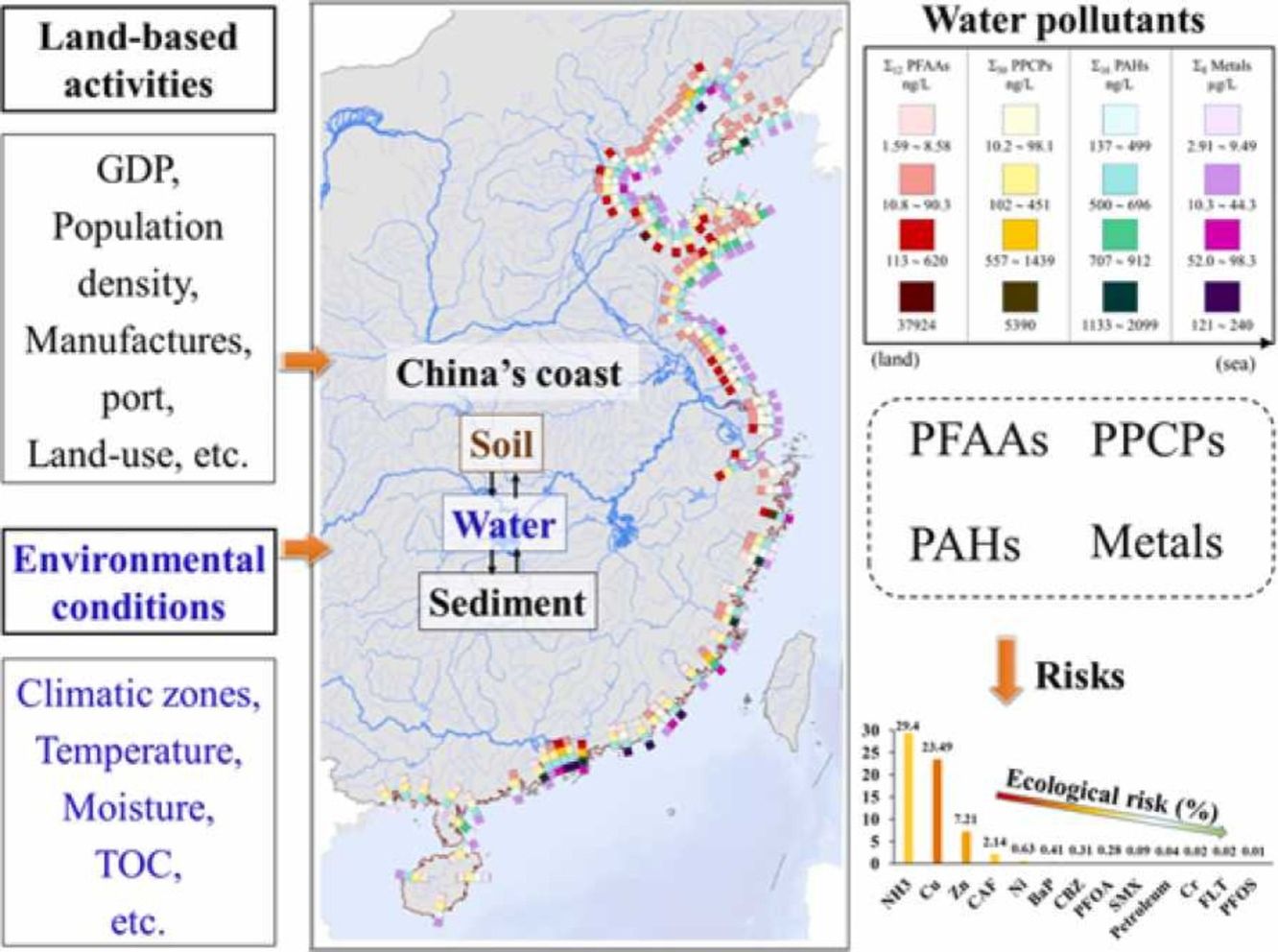Multiple pollutants stress the coastal ecosystem with climate and anthropogenic drivers
Yonglong Lu*, Pei Wang, Chenchen Wang, Meng Zhang, Xianghui Cao, Chunci Chen, Cong Wang, Cuo Xiu, Di Du,Haotian Cui, Xiaoqian Li, Wenyou Qin, Yi Zhang, Yichao Wang, Anqi Zhang, Mingzhao Yu, Ruoyu Mao, Shuai Song, Andrew C. Johnson, Xiuqing Shao, Xuan Zhou, Ting Wang, Ruoyu Liang, Chao Su, Xiaoqi Zheng, Sheng Zhang, Xiaotian Lu, Yuqing Chen, Yueqing Zhang, Qifeng Li, Kotaro Ono, Nils C.Stenseth, Martin Visbeck, Venugopalan Ittekkoti
Journal of Hazardous Materials
https://doi.org/10.1016/j.jhazmat.2021.127570
Published: 15 February 2022
Abstract
Coastal ecosystem health is of vital importance to human well-being. Field investigations of major pollutants along the whole coast of China were carried out to explore associations between coastal development activities and pollutant inputs. Measurements of target pollutants such as PFAAs and PAHs uncovered notable levels in small estuary rivers. The Yangtze River was identified to deliver the highest loads of these pollutants to the seas as a divide for the spatial distribution of pollutant compositions. Soil concentrations of the volatile and semi-volatile pollutants showed a cold-trapping effect in pace with increasing latitudinal gradient. The coastal ecosystem is facing high ecological risks from metal pollution, especially copper (Cu) and zinc (Zn), while priority pollutants of high risks vary for different kinds of protected species, and the ecological risks were influenced by both climate and physicochemical properties of environmental matrices, which should be emphasized to protect and restore coastal ecosystem functioning.
